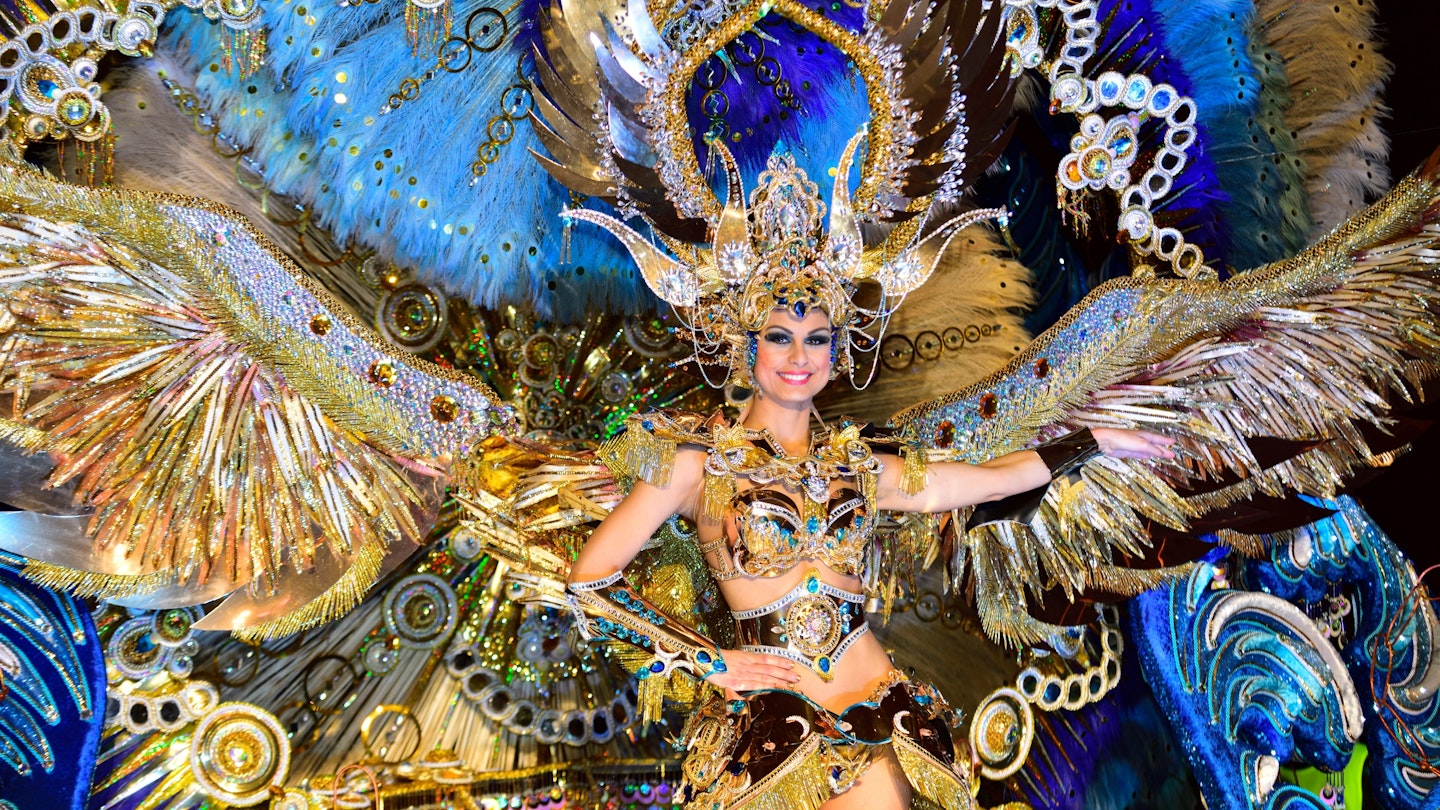Jan 14, 2020 • 4 min read

In some places across the world, Carnival is simply a celebration with colorful parades that can occur at any time of year. However, in Spain, it refers to the specific festivities marking the big blowout before Lent. With traditions rooted in both Catholic and Pagan practices, Spanish Carnival celebrations typically feature an array of colorful costumes, parades, street parties, and concerts. Here’s our guide to how and where to celebrate Carnival in Spain.

When do the celebrations take place?
As Easter changes each year, so do the dates for Carnival; however, it always occurs in the week leading up to 40 days before Easter Sunday. In 2020, it will be celebrated from February 20–26. The festivities begin on Fat Thursday (Jueves Lardero) and conclude on Ash Wednesday, marking the start of Lent. The term Carnival is derived from the Latin phrase ‘carne levare’, meaning to ‘remove meat’, reflecting the tradition of giving up meat during Lent (Cuaresma).
What happens during Carnival in Spain?
In Spain, Carnival celebrations boast a packed program that lasts an entire week. The festivities commence with the arrival of the Carnival King or Queen, who spreads joy and mischief throughout the city. Parades, inventive costumes, and lively music—usually samba-style drumming from Brazil—follow. The week concludes with the Entierro de la Sardina, or the Burial of the Sardine, a mock funeral procession that bids farewell to the revelry and the Carnival King or Queen, ushering in Lent.

The best places to celebrate Carnival in Spain
Carnival is celebrated throughout Spain; however, some parties are larger and more renowned than others. If you’re planning a special trip to Spain for the Carnival season, here are some of the top destinations.
Tenerife
Tenerife boasts one of the biggest and best Carnivals in the entire country. The celebrations here closely resemble those seen in Brazil and the Caribbean, overflowing with glittery costumes and massive floats. There are not just one but several grand parades, along with street parties and concerts. If you can’t reach Rio, this might just be your next best option.

Sitges
Sitges is a small resort town located just down the coast from Barcelona. It may be among the smallest locations on our list; however, it has one of the biggest and wildest Carnival celebrations, drawing more than 250,000 people. Some Carnivals in Spain are closely associated with the LGBTQ+ community, notably the one in Sitges, which features numerous gay-friendly parties and drag queens. The Carnival lasts seven days and offers a variety of lively events.
Cádiz
Cádiz’s Carnival is likely closer in spirit to Venice’s than Brazil’s, and it is the biggest celebration on mainland Spain. It also boasts a rich history, dating back to the 16th century, being the only Carnival that Franco could not ban during his rule. The festivities include masked parades and processions, concerts, and a vibrant atmosphere of dancing and singing in the streets, characterized by humor and music, including plenty of stand-up comedians, street theater, puppet shows, and diverse concerts. The celebrations here last for an entire 10 days.

Barcelona
Carnival in Barcelona may not be as wild as in Tenerife, Sitges, or Cádiz; however, there are still numerous celebrations to engage in. Every neighborhood in the city holds its own Carnival parade, representing schools and associations with vibrant costumes and floats. One of the largest parades—called the King’s Parade—occurs in the barrio (district) of El Born. Similar to Sitges, this one includes a multitude of characters dressed in drag. Following the parade, the Taronjada, a massive orange fight, occurs—much like the Battle of the Oranges in Italy. Instead of real oranges, orange balloons and confetti are used in this fun event.

Madrid
As the capital of Spain, it’s not surprising that Madrid features some fantastic Carnival events. However, the celebrations typically take place in the lesser-known neighborhoods rather than in the center. The festivities in the capital include the Great Carnival Parade and a masquerade ball, alongside the traditional Burial of the Sardine. Don’t miss trying Madrid’s official Carnival dessert—a chocolate sardine.
Laza, Galicia
If you seek a Carnival experience with a unique twist, travel to the town of Laza in Galicia. The Os Peliqueiros Carnival here is distinct, featuring individuals dressed as whimsical characters, adorned with giant hats, traditional costumes, and masks, wielding cowbells and whips. The festivities culminate in a large battle, where participants throw items such as flour, eggs, and dirt at one another.





